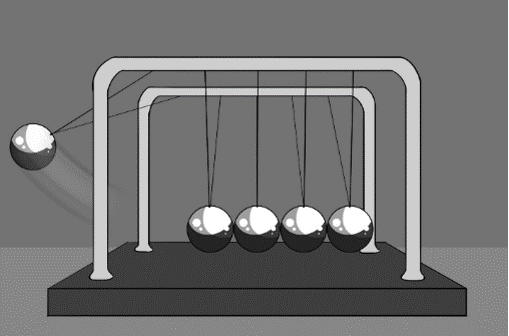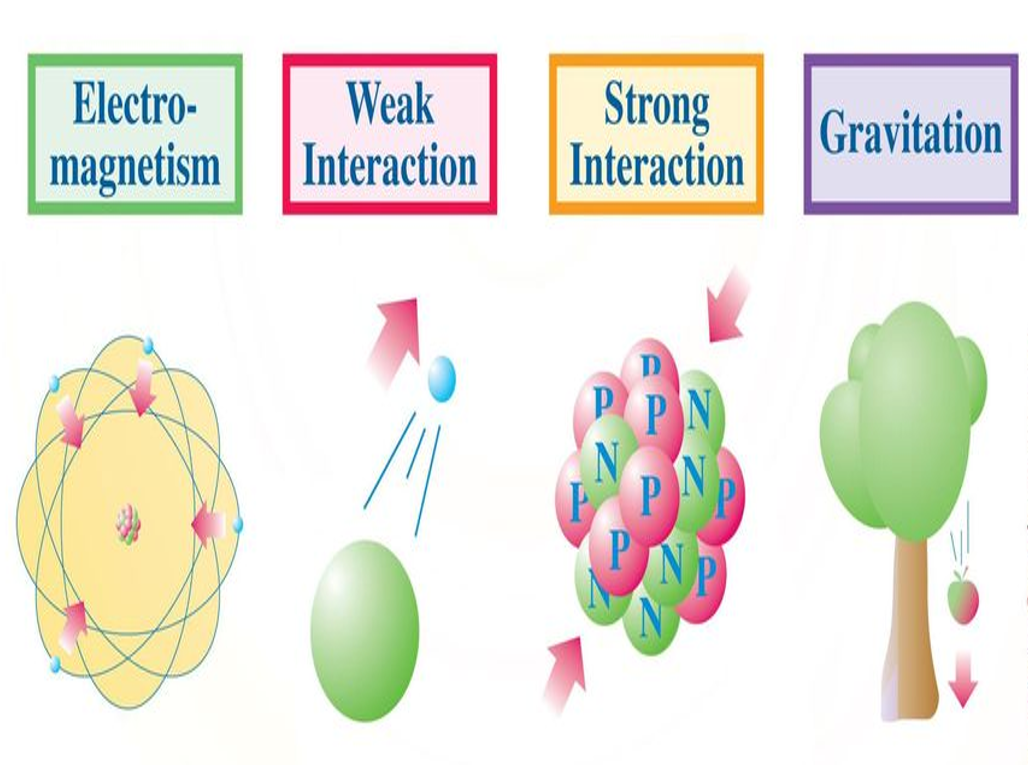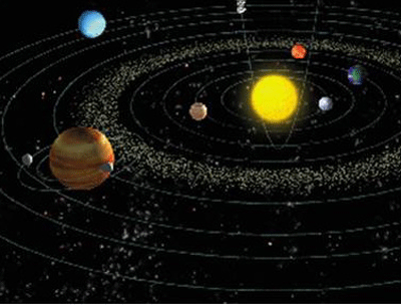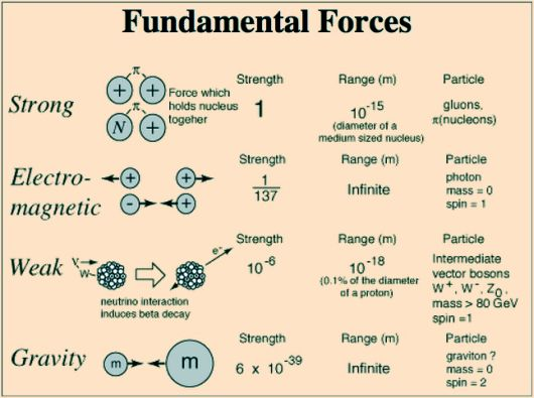PHYSICAL WORLD for Class 11 PHYSICS
INTRODUCTION
Hum is chapter me basic chijo k bare me baat karenge ki aap class 11 kya padne wale hai aur physics me kin chijo ko aapko janna jaruri hai. Is chapter se que nahi aate pr aapko smjhna jaruri hai. Class 9 or 10 me aap motion- state of body, force, light, gravitation k bare me basic padh chuke hai. Ye sari chije physics ko relate krti hai. Class 11 me hum padhenge Unit and measurements, Motion 1D, 2D means koi particle move kar raha hai to kis taraf se move kar raha hai, forces, friction, circular motion, work power and energy means hum jo kam karte hai daily life me uska kitna part use ka hai. Power, work se related hai aur energy in dono se related hai. Center of mass, system of linear particle - body ka mass center me concentrated hai. Force hume kaha lagana hai ki koi bhi chij asani se ghum jae jaise ki drwaje me, fan me etc. Simple harmonic motion, waves, thermodynamics, thermal properties of matter k sath 11th ki physics over hojaegi. Apne surroundings me ho rahe changes ke bare me physics aapko sochne pe majbur kr dega jisse aapko physics padhne me interest aaega.
WHAT IS PHYSICS?
Physics is the laws and principles that govern the universe. Is pure bramhand ki jo bhi phenomena hai use samjhane wale sidhdhant physics hai. Ye humko batata hai koi chij kyu ho rahi hai, kaise ho rahi hai aur wo smjhne ke baad aap uska future bhi predict kr skte hai. Ager kisi object ko hight se chhod diya aur wo niche gira to question ata hai, why? Gravity se gira. Dusra question ata hai how? Kis speed se gira kaise niche pahucha. Ye bhi aap equation of motion due to gravity se jaan sakte hai. jisse aapko why aur how pta chal gya.
Agar aap kisi unchi building me jaker ball ko chhod doge. To kya such me chhod ke dekhoge? ny aapke pass equation of motion hai, aap value rakh ke calculate kr loge. Is tarah se hum apni daily life me physics ko utilize karte hai.
Maan lo aap pani ki drop table pr gire to pani ki drop spherical kyu hai. Surface tension se, but how? Ye baate hume smjh aagai to hum future predict kr skte hai jiske liye experiment ny krna padega sari value and equation humare pass hoti hai jisse eq. solve karke result nikal lete hai.
Maan lo hum PUB-G khel rae koi dusman samne aagaya tumne marne ki kosis ki to tumne different banduk try kiya pr agli bar koi aur dusman aagya to kya tum try krke dekhoge ? Nahi tumhe ab banduk ke features pata hai to ab tum use krke sidhe dusman ko mar doge.
Physics different phenomena pr based hota hai. Isaac newton, galileo sab ne bade bade phenomena diye jaise din aur raat hona, thandi garmi kyu aati hai aur aasman neela kyu hai. Ghar pe use hone wale appliances jaise tv, fan, fridge ye sb physics ki help se hi explain hua.
Ager aap chijo ko dekh pa rae ho wo isliye kyuki light object pr padhti hai or chije dikhai deti hai. Ager aap kisi ki awaj sun pate ho kyuki sound, waves ke form me aapke kano tk pahuch raha hai. Sound ki bhi apni limitation hoti hai. Jo bhi aap apne aas pass dekhte ho sb physics hai. Ager aap khade ho pa rae ho, chal pa rae ho, apne hath me saman pakad pa rae ho ye sb physics hai.
Physics is the study of everything, nature and its laws.
Light, sound sb hume nature se mili hai, nature me jo bhi ho ry hai un sari chijo ki study physics kahlati hai.
The branches of Physics:
Ancient (Classical) Physics: bht purana hai 1900 se pehle ki physics
Modern (Quantum) physics: bht naya hai 1900 se baad ki physics
Nature apne laws ko hamesha follow krti hai. Pen niche girega to niche hi girega. It is a universal truth.
Jamane ko apna bna kr dekha physics ko apna bana kr to dekho.
Kya physics aur maths same hai? Physics is incomplete without mathematics. Tumne koi phenomena dekha laws socha to sare equation ko solve krne ke liye physics ki jarurat hogi. Physics is a king of science and mathematics is queen.
Fundamental principle in physics : unification and reductionism
Unification :Unification mtlb unify karna means bht sare phenomena ko thode se laws se samjha dena.
Ek freefall gravitation, earth ka sun ke charo taraf ghumna and moon ka earth ke charo taraf ghumna in sb ke liye ek universal law gravitation hai ka jisse aap sare phenomena ko describe kr skte ho. Ek particular law se sare phenomena explain ho rahe hai ise unification kahte hai.
Reductionism :
To study a large system
To study properties of constituent particles
Chhote chhote part ki study kr lenge to smjh me aajayega ki pure system me kya ho raha hai.
Class 10th me humne electric motor aur generator padha tha. Ye sirf isliye imp nahi hai ki working smjh liye balki uske chhote partical ka mtlb samjh usse koi aur advance technology bana sakte ho.
SCOPE AND EXCITEMENT OF PHYSICS
Aapko physics abhi jyada kuchh nahi pata but aapne scientific movies dekhi hogi jisme space research and all ke bare me dikhaya hota hai. Scope mtlb aap physics kaha pe use kar sakte ho. Physics ka scope undefined hai. Aawashyakta hi avishkar ki janni hai. Galilio ne uper taro ko dekha to socha ki kya chhote chhote dane jaise hai. Use dekhne ke liye unhone telescope bnae. Fir newton aae unhone dekha ki chand earth ke charo taraf ghum rahe hai to socha ki moon ke hi charo taraf kyu ghum ra hai to unhone law of gravitation ki khoj kr di. Humne kabhi nahi socha tha ki moon pe ja paenge. Pehle ke phone kaise hote the ab kaise. technology badhti ja ry hai.
(a) Macroscopic level study of physics : deals with physical world of large bodies
(b) Microscopic level study of physics : deals with physical world of atoms and molecules
Macroscopic level study of physics : Classical Physics
Bade bade object ki study terrestrial object - chand tare planets macroscopic level ki study me aate hai. Is level ki study ko 4 parts me devide kiya gaya hai.1. Mechanics
2. Thermodynamics
3. Electrodynamics
4. Optics

Mechanics
Mechanics is based on Newton's law of motion, and law of gravitation. It is concerned with motion and equilibrium of particle rigid and deformable bodies. Koi bhi body move kaise kr raha hai, kyu kr ra hai in sabke liye phenomena ki study mechanics me karte hai.
Thermodynamics
It deals with systems in macroscopic equilibrium and changes in internal energy, temperature, entropy etc. under application of heat. Pressure volume heat, heat and flow of heat dynamics mtlb movement.Electrodynamics
It deals with Electric and magnetic phenomena associated with charged and magnetic bodies.Loha hi chumbak se kyu attract ho ra wood kyu ny attract hota hai? kyonki lohe ke ander charge particles hote hai. Inse related phenomena ki study hum electrodynamics me karte hai.
Optics
Optics me light ke phenomena ke sath deal karte hai. Jaise ki Lens ke baare me, Optical instruments ke bare me. Telescope, prizm se light dene par dusri taraf se 7 colors kaise nikal rahe hai.Microscopic level study of physics : Modern Physics
Modern physics me hum atomic level, nuclear level aur communication system jaise ki wireless communication, satellite and space research ki study karte hai.
Quantum Mechanics
Quantum mechanics physics me ek fundamental theory hota hai jo ki atoms ya subatomic particles ke physical properties ke bare me description deta hai.Theory of Relativity
Theory of relativity ke antargat do interrelated theory ka aapas me correlation hai. Do type ke relativity hota hai special relativity and general relativity. Special relativity ka apply wo sare physical phenomena me hota hai jaha gravity nahi hota hai. General relativity law of gravitation ko explain krta hai.EXAMPLE 1
Why is physics regarded as basic science?
Physics is a science because it is fundamentally based on experiment. Very few physicists sit around making up theories. The vast majority of physicists go to work every day planning and conducting experiments. Because the word science nowadays means the physical sciences, and physics pursues the same fundamental methodology as the other physical sciences. So, It is the branch of science dealing with measurements,motion,space and time etc. It is fundamental science because;
- It is the basic foundation for all other topics that we today study in different branches.
- It actually also studies about how UNIVERSE came into existence which led the foundation of everything from a tiny atom to giant bodies.This branch is called ASTRONOMY.
- Physics intersects with many interdisciplinary areas of research, such as biophysics and quantum chemistry, and the boundaries of physics are not rigidly defined.
- There are laws in physics that lay the basic concept of understanding of the working of everything.
- Also physics explains natural phenomena in the universe, it's often considered to be the most fundamental science.
EXAMPLE 2
What are the roles of physics in your daily life?
Physics is all around us. We can find Physics as the backbone for any daily life example such as an electric light, electricity, the working of our vehicle, wristwatch, cell phone, CD player, radio, plasma TV set, computer, and the list goes on.
As we all know physics is the study of natural phenomena.Any sort of technology which we uses in our daily life is related to physics; You can see the examples given below:
1. Television uses electromagnets to direct electrons on a screen to produce pictures.
2. A cell phone uses microwaves.
Your car is built on mechanical principles.
3. A refrigerator uses thermodynamic principles.
4. Most modern homes use electricity to power appliances.
5. Physics is also a necessity in solving our future problems.
The examples cited above show that forward-looking developments are based on the insights of physics. This applies most especially to all problems, or rather solutions thereof, which are critical for our future. Whether it pertains to new materials, the development of fuel cells for more environmentally-friendly propulsion techniques, or nuclear fusion as a source of energy in the future, in any event, physics creates the conditions for solving problems.
PHYSICS, TECHNOLOGY AND SOCIETY
New physics gives rise to new technology. Jaise ki silicon chips ki study hui to isse bane semiconductor, isse bna laptop, mobile phone, TV sets but kisi ko pta nahi tha ki kya-kya bn jayega. Electromagnetic wave ki khub study ki gai isse bane hamare wireless connection, wifi, drone, camera. DC pehle bana fr AC bana fr transformer bna aur alternator. Physics ki do teen chijo ko joda new technology ban gai. Need of technology gives new rise to physics. Thermodynamics se mila heat engine uske baad bni diesel engine.

FUNDAMENTAL FORCES IN NATURE
Force - App jitni bhi force padhode unka basic force in charo force me se hi hoga.- 1. Gravitational force
2. The weak force
3 Electromagnetic force.
4. The strong nuclear force.

1. Gravitational force -
Act between any two masses in this universe, weakest force, long range force, sun earth moon. Koi medium ki jarurat nahi hoti, jaha jaha mass hoga waha waha gravitational force hoga. Sabse kamjor hota hai. Gravitation nuclear force
Gravitation Force =Gm1m2r2

Earth ne pen ko attract kiya pen bhi earth ko barabr intensity se attract karega per earth ka mass jyada hai islie pen earth ki traf girta hai earth pen ki taraf nahi girta.
2. Electromagnetic Force -
Act between charges repel force attract force, does not require medium , long range. Aapne 10th me padha hoga lenz's laws faraday's laws to ye charge ke bich ka force hota hai electromagnetic force.
3. The Strong Nuclear Force -
Mass ka force hoga gravitation, isme ek mass dusre mass ko attract krta hi. Dusra hoga charge ka force. Charge bhi ek property of matter hai. Baki ke do nuclear ke bich hoga ek weak or dusra strong. Nuclear ke ander jo proton or neutron hote hai. Proton-proton ke bich, Neutron-neutron ke bich aur proton aur neutron ke bich ka force. Charge free hota hai. Charge ko farak nahi padhta itna strong force hota hai kyuki ye ek dusre se jude hote hai.
4. Weak Force
Ye rare kind ki force hai. Act between neutrinos and other particles. Beta decay., short range force hai. 10−15 m. weak but gravitational se strong hai. 12th k last chapter me nuclear physics me padhoge ki nucleus apne aap tut jate hai.

Range - Kis duri me Ye forces lag skte hai. Duri hai us force ki jaha tk wo force lag sakta hai.
Gravitational force ka range infinite hai earth sun ke charo aur moon earth ke charo aur ghoomta hai,hajaro km dur hone ke baad bhi gravitation ke karen ho raha hai. Anant duri pr bhi gravitation force work kr ra hai.
Earth ek bht bada mass hai isliye attract krega jiska mass jyada hoga wo attract krega.
Electrodynamical force - Charge ke magnitude pe depend karega. Earth bhi ek magnet hai. Class 12th me hum padhenge ki earth bhi ek magnet hai jiski Infinite range hoti hai.
Strong force - Nucleus - protons and neutrons tightly bandhe hote hai. Neutron pe koi charge nahi hai waha. Like charges repel krte hai pr wo nuclear force kam hota hai islie proton ke pass hota hai.
Charge se koi lena dena nahi hai. Sabme utna hi force hai. Charge pe depend nahi krti. Nucleus ke particle pe depend karta hai. Isiliye nucleus stable hota hai, short range ki force ho. Nuclear force electron pr nahi lagti nucleus ke ander hi lagti hai. Attractive force hai isliye nucleus stable ho jata hai.
Weak force- Modern physics me padhoge ki koi nucleus apne aap tutega. Waha hum bolenge weak nuclear force lagega. Bht chhote nucleus hume najar bhi nahi aaega aankho se hume dikhai bhi nahi dega iske liye micro scope use krte hai.
NATURE OF PHYSICAL LAWS
Isme hum nature se related jo natural phenomenon hai uske bare me study karte hain. Jaise ki classical physics me 4 type ke law hote hain.1. Law of conservation of energy.
2. Law of conservation of linear momentum.
3. Law of conservation of angular momentum.
4. Law of conservation of charge.
Yaha pr law of conservation ka mtlb hai wo quantity jo constant hoti hai with time.
EXAMPLE 3
Discuss the relation between physics and technology.
Physics is the fundamental of all technologies in the physical world. They are related to each other in every aspect. Physics tries to explain how the universe works and technology exploits that knowledge to build useful stuff. Also, physics experiments now use a lot of technology. For instance, physics explained how electrons are emitted from a heated cathode in a vacuum, and technology used that to make TV tubes. Physics explains the bandgap structure in semiconductors like doped silicon, and technology makes transistors and LEDs. Technology can’t make things at random a flying machine from a piece of soap and a stick of celery. Physics tells it to try a cloth envelope and a gas burner.
Broadly speaking, physics and technology both constitute science. Physics is the heart and technology is the body of science. The application of the principles of physics for practiced purposes becomes technology, e.g.,
(i) Aeroplanes fly on the basis of Bernoulli’s theorem.
(ii) Rocket propulsion is based on Newton’s second and third laws of motion.
(iii) Generation of power from nuclear reactors is based on the phenomena of controlled nuclear fission.
(iv) Lasers are based on the population inversion of electrons and so on.
Thus, we can say that to some extent science and technology is applied physics.
EXAMPLE 4
What is the difference between classical physics and modern physics?
Classical physics is mainly physics before the 19th century which mainly consists of Newtonian physics, some principles by Galelio and it mainly focuses on macroscopic observation of matter.
Whereas modern physics mainly comprises physics after the 19th century which includes disciples like electromagnetism, wave nature of light, dual nature, etc.
It includes quantum mechanics which arose due to the works of Sir Max Planck in the fields of quantum theory of light and theory about black body radiations.
In quantum physics, one mainly focuses on the study of quantization of energy in the atomic level, it also includes theories like Bohr's theory of atomic model in which he discussed quantization of energy of electrons(fixed discrete levels of orbits).
In a nutshell we can assume that modern physics deals with fundamental theories of nature at small scales , low energy levels of atoms and subatomic particles.
Like , in quantum mechanics ,we study about particles having discrete values of momentum, energy and other quantities and have dual nature (i.e characteristics of both particle as well as wave) and there is uncertainty about position and momentum at the same time of a particle (also called Heisenberg's uncertainty principle).
EXAMPLE 5
Does imagination play any role in physics?
Yes, imagination plays a role in physics. Albert Einstein: “Imagination is more important than knowledge. For knowledge is limited to all we know and understand, while imagination embraces the entire world, and all there ever will be to know and understand.”
Imagination is a strange, abstract concept. The definition of imagination is the faculty of forming mental images or concepts of what is not actually present in the physical senses.
Physics, at least theoretical physics, relies on the brain's ability to come up with ideas that have never been thought of before, and develop older concepts into newer, more accurate ones. The word concept here is very important, because it is the brain's ability to conceptualise is what drives physics forwards. From theoretical, where new ideas can further the field, to experimental, where a new or revised experimental technique can lead to new discoveries.
It is imagination which not just drives physics, but drives the world. Every innovation technical, economic, political, humanitarian allows the world to move forward. Imagination is an innate human trait/ability, and it's one of the things that help us learn, create, and enjoy ourselves. of course, first comes the question, usually something starting with a “Why?", then starts the creativity and imagination process of “What If?” or “How Can?”, creativity and imagination isn't always about fiction or science fiction, it is about conceptualizing, maybe something miniscule, or possibly revolutionary, most everything in history started out as a result of imagination or was refined using it. Never hold back or be reserved by the words imagination and creativity, use them and abuse them, but NEVER put them on the shelf.
EXAMPLE 6
Should a science discovery which has nothing but dangerous consequences for mankind be made public?
Yes, discovery, good or bad, must be made public. Because that is the point of scientific research. To progress human knowledge. Something which appears dangerous today, may be put to use in some other form later. Controlled release to the public will help realise both it's dark and bright sides, knowing both nature of it's true potential are equally important. So, a discovery, which reveals a truth of nature should not be concealed.
SUMMARY
1. Physics deals with the study of the basic laws of nature and their manifestation in different phenomena. The basic laws of physics are universal and apply in widely different contexts and conditions.
2. The scope of physics is wide, covering a tremendous range of magnitudes of physical quantities.
3. Physics and technology are related to each other. Sometimes technology gives rise to new physics; at other times physics generates new technology. Both have a direct impact on society.
4. There are four fundamental forces in nature that govern the diverse phenomena of the macroscopic and the microscopic world. These are the ‘gravitational force’, the ‘electromagnetic force’, the ‘strong nuclear force’, and the ‘weak nuclear force’. Unification of different forces/domains in nature is a basic quest in physics.
5. The physical quantities that remain unchanged in a process are called conserved quantities. Some of the general conservation laws in nature include the laws of conservation of mass, energy, linear momentum, angular momentum, charge, parity, etc. Some conservation laws are true for one fundamental force but not for the other.
6. Conservation laws have a deep connection with symmetries of nature. Symmetries of space and time, and other types of symmetries play a central role in modern theories of fundamental forces in nature.